Governing body Private | Completed 1897 Opened 1897 | |
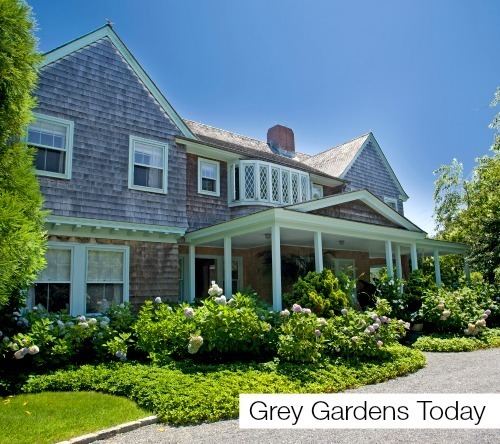 | ||
Architectural style Shingle style architecture Similar Georgica Pond, Lasata, Georgica Beach, Maidstone Club, Barbizon 63 | ||
Grey Gardens is a 14-room house at 3 West End Road and Lily Pond Lane in the Georgica Pond neighborhood of East Hampton, New York. The lives of its residents were chronicled in the Grey Gardens 1975 documentary, 2006 Broadway musical, 2009 television movie, and numerous other books and documentaries.
Contents

Design and early ownership

In 1895, 4 acres (16,000 m2) of oceanfront land was bought by F. Stanhope Phillips and Margaret Bagg Phillips, daughter of John S. Bagg, who had acquired the Detroit Free Press in 1836. The Phillips paid $2,500 (equivalent to $72,000 in 2016) from the estate of a Mr. Candy. The couple announced their plans to build a $100,000 (equivalent to $2,879,000 in 2016) house on the property. However, the purchase hit a snag when it was revealed that the property had been bequeathed to the U.S. government.
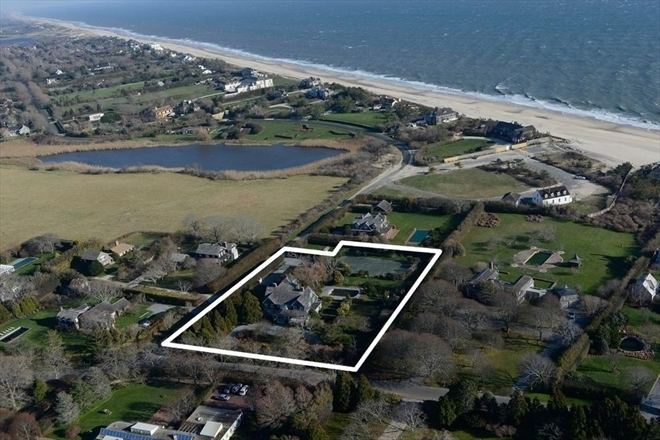
In 1897, Joseph Greenleaf Thorpe (1862–1934) designed the house. Thorpe had designed several other houses in East Hampton. But the house did not get immediately built.
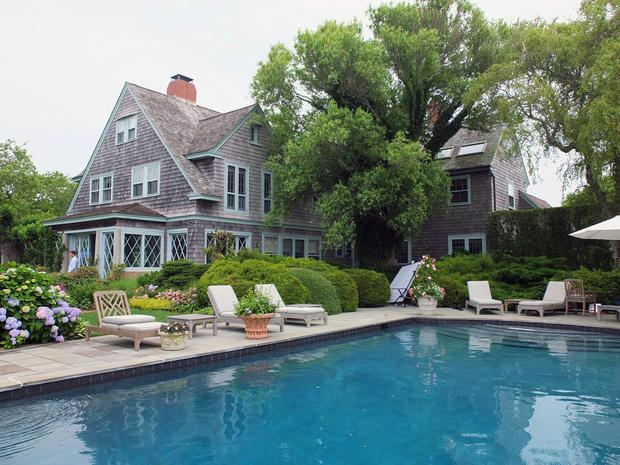
Phillips died in 1901, leaving behind an estate valued at $250,000 (equivalent to $7,197,000 in 2016). His brother challenged Margaret for control of the estate, saying she had used undue influence on him and that she had cremated him so that an autopsy could not be performed to confirm this. The court sided with Margaret.
After the ownership issues were settled, the house was built.
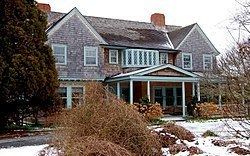
In 1913, Robert C. Hill, president of Consolidation Coal Company, bought the house. Hill's wife Anna Gilman Hill (1875–1955) imported ornate concrete walls from Spain to enclose the garden and hired landscape designer Ruth Bramley to create what would become the core of Grey Gardens. Ruth was married at the time to architect Aymar Embury II and their offices were in the same building.
Beale ownership
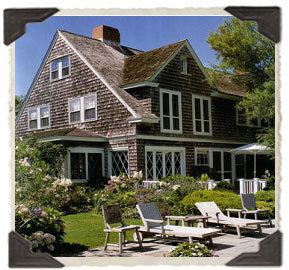
In 1924, Phelan Beale and Edith Ewing Bouvier Beale acquired the house. Phelan was a law partner of John Vernou Bouvier, Jr. and had married Bouvier's daughter, Edith. Bouvier had a house in East Hampton three miles north on Further Lane at Lasata where his granddaughter Jacqueline Bouvier Kennedy Onassis was a frequent visitor.
Phelan Beale divorced his wife Edith around 1946 by telegram from Mexico. Phelan provided his former wife an allowance of $300 (equivalent to $4,000 in 2016) per month to maintain herself and her daughter Edith Bouvier Beale, who was commonly known as "Little" Edie to distinguish her from her mother. They eventually lost contact. The property began to fall into disrepair due to the paucity of funds available. It remained inhabited by the two women, who kept a large number of cats and wild animals in the house.
In 1972, the Suffolk County, New York Health Commission issued an eviction order stating the Beales would be evicted unless the house was cleaned up. The news of the order and of the squalor in which the two women lived received international attention because "Big" and "Little" Edie were the aunt and first cousin of Jacqueline Kennedy, widow of former US President John Fitzgerald Kennedy and wife of Aristotle Onassis.
Jacqueline and her sister, Lee Radziwill, donated money to make the house habitable and bring it up to a standard that would rescind the order.
In 1973, Lee Radziwill suggested that filmmaking brothers Albert and David Maysles make a documentary about Jacqueline's days in East Hampton. When this project fell through the Maysles turned their attention to the Beales and the result was the 1975 documentary Grey Gardens.
Ben Bradlee and Sally Quinn ownership
In 1979, Little Edie sold the home to Ben Bradlee and Sally Quinn for $220,000 (equivalent to $726,000 in 2016) under the terms they were not to tear down the house. Little Edie told them "All it needs is a coat of paint!"
Quinn recalled later that the house "was worse than the movie". The agent refused to even set foot in the house. She said they found the skulls of raccoons in the house as well as the waste from 52 feral cats.
"The smell of the house was beyond anything you can imagine," she said.
Bradlee and Quinn restored the home. The home now hosts many parties and charity events yearly and has been featured in several architectural and home décor magazines. It is also rented out on a monthly basis.
In 2017, Quinn put the house up for sale, with an asking price of $19,995,000.
